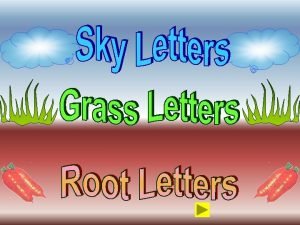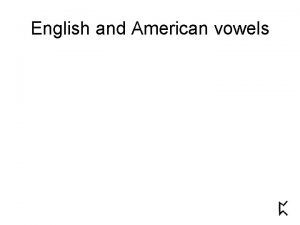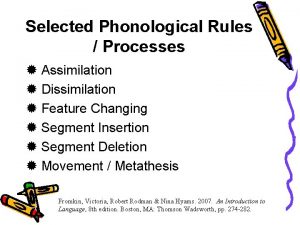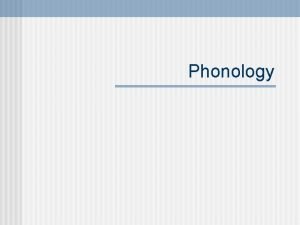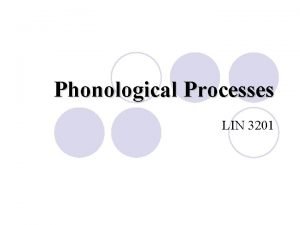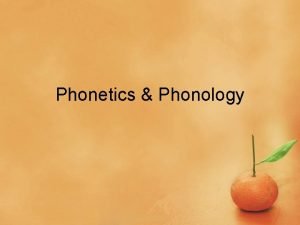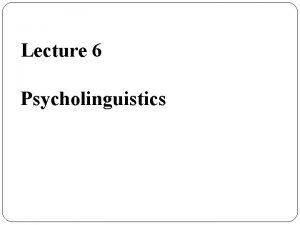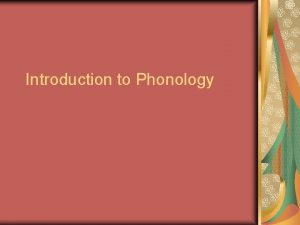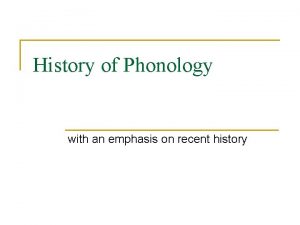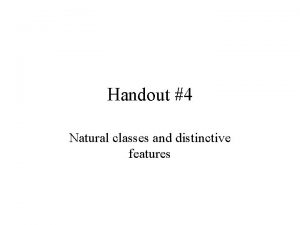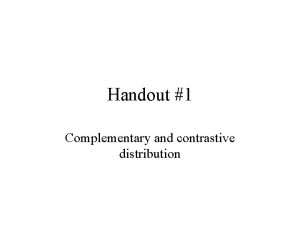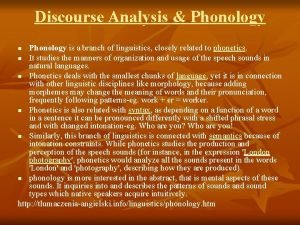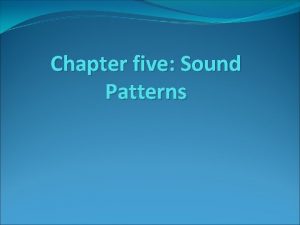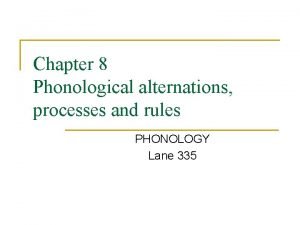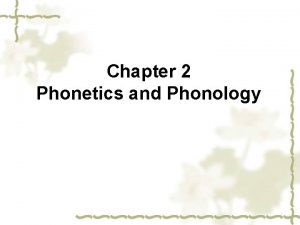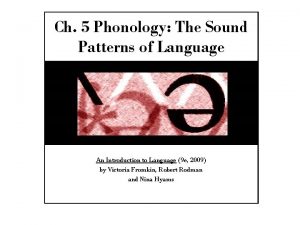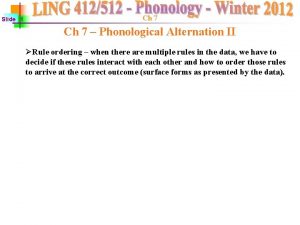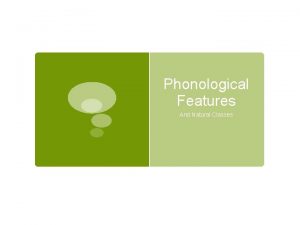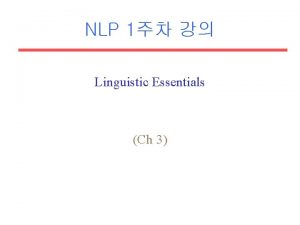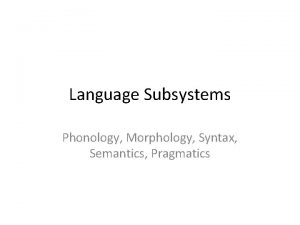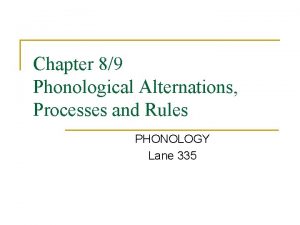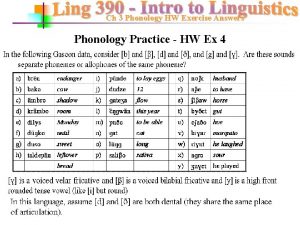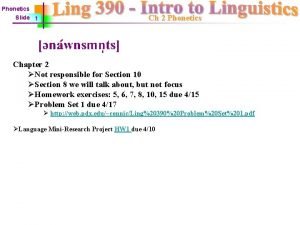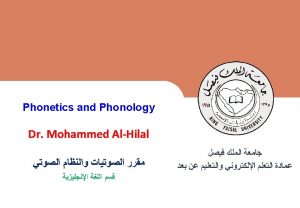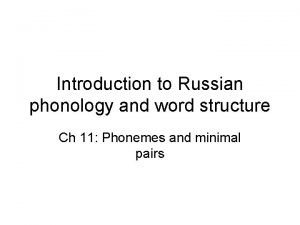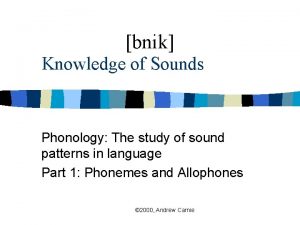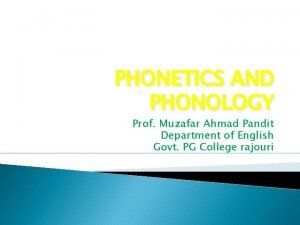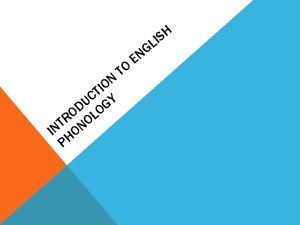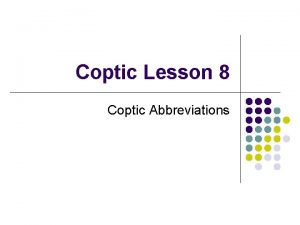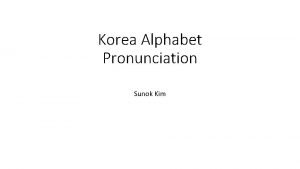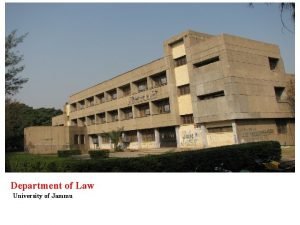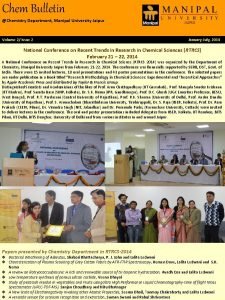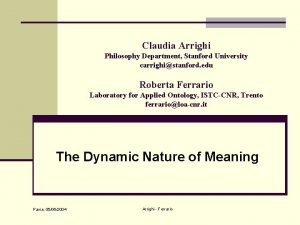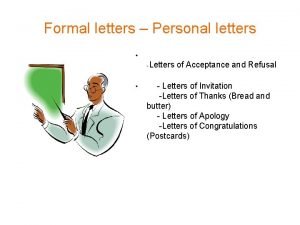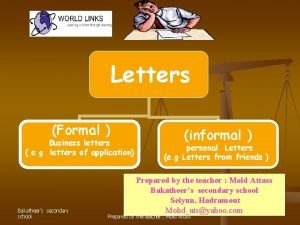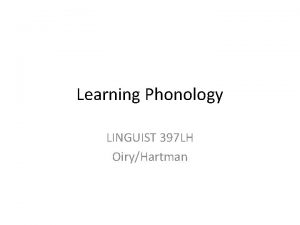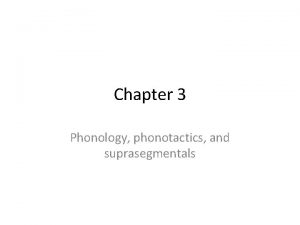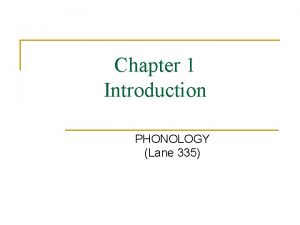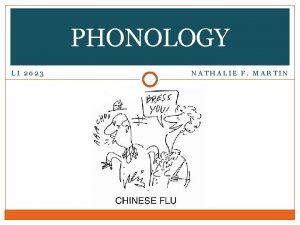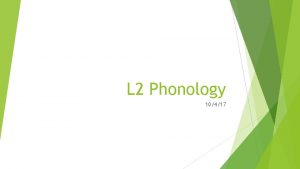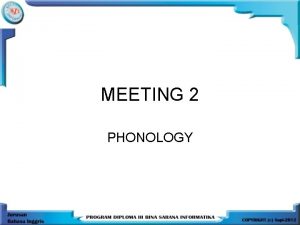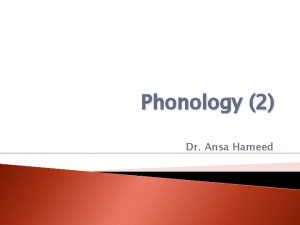PHONOLOGY ENGLISH DEPARTMENT FACULTY OF LETTERS GUNADARMA UNIVERSITY































![[-z] or [-s] • • Bananas Grapes Lemons Cookies Cakes Tarts Potatoes Carrots 1. [-z] or [-s] • • Bananas Grapes Lemons Cookies Cakes Tarts Potatoes Carrots 1.](https://slidetodoc.com/presentation_image_h/2425afbb8dae1e7ae155e5d96b59f231/image-32.jpg)
![[-d], [-t], or [-id] • • Studied Kicked Eliminated Erased Looked Typed Measured Surrounded [-d], [-t], or [-id] • • Studied Kicked Eliminated Erased Looked Typed Measured Surrounded](https://slidetodoc.com/presentation_image_h/2425afbb8dae1e7ae155e5d96b59f231/image-33.jpg)
![Dissimilation: Two Sounds Becoming Less Alike • “Fifths”: [f I f __ s] [f Dissimilation: Two Sounds Becoming Less Alike • “Fifths”: [f I f __ s] [f](https://slidetodoc.com/presentation_image_h/2425afbb8dae1e7ae155e5d96b59f231/image-34.jpg)













![ALLOPHONE: • top [t__p] stop [st_p] phoneme allophones little [litl] kitten kite [kitn] [kait] ALLOPHONE: • top [t__p] stop [st_p] phoneme allophones little [litl] kitten kite [kitn] [kait]](https://slidetodoc.com/presentation_image_h/2425afbb8dae1e7ae155e5d96b59f231/image-48.jpg)












![Sonority and Syllables • [blænd] works well, too. high sonority [æ] [l] [b] [n] Sonority and Syllables • [blænd] works well, too. high sonority [æ] [l] [b] [n]](https://slidetodoc.com/presentation_image_h/2425afbb8dae1e7ae155e5d96b59f231/image-61.jpg)
![Sonority and Syllables sonority peak high sonority [æ] [l] [b] [n] [d] low sonority Sonority and Syllables sonority peak high sonority [æ] [l] [b] [n] [d] low sonority](https://slidetodoc.com/presentation_image_h/2425afbb8dae1e7ae155e5d96b59f231/image-62.jpg)
![Sonority and Syllables sonority peak high sonority [æ] [l] [b] [n] [d] low sonority Sonority and Syllables sonority peak high sonority [æ] [l] [b] [n] [d] low sonority](https://slidetodoc.com/presentation_image_h/2425afbb8dae1e7ae155e5d96b59f231/image-63.jpg)









































- Slides: 104

PHONOLOGY ENGLISH DEPARTMENT FACULTY OF LETTERS GUNADARMA UNIVERSITY

REFERENCES: 1. Peter Roach, ENGLISH PHONETICS AND PHONOLOGY, Cambridge University 2. Claire-A. Forel & Genoveva Puskás, PHONETICS AND PHONOLOGY, Reader for First Year English Linguistics, University of Geneva 3. Philip Carr, PHONOLOGY, The Mac Millan Ltd, London, 1993. 4. Victoria Fromkin et. Al, AN INTRODUCTION TO LANGUAGE, Ninth Edition, 2001

REFERENCES: 5. Gimson, A. C. (1980). An Introduction to the Pronunciation of English. London: Ed. Arnold, 3 rd edition. 6. Hooper, J. B. (1976). An Introduction to Natural Generative Phonology. San Francisco: Academic Press. 7. Jones, D. (1950). An Outline of English Phonetics. Cambridge: Heffner & Sons.

8. ____ (1975). English Pronouncing Dictionary. Revised by A. C. Gimson. London: Dent, 13 th edition. 9. Ladefoged, P. (1982). A Course in Phonetics. New York: Harcourt Brace Jovanovich, 2 nd edition. 10. Mc Carthy, P. (1967). English Pronunciation. Cambridge: Heffer & Sons, 4 th edition.


DEFINITION OF PHONOLOGY: • Phonology is the study of sounds and speech patterns in language. The root "phone" in phonology relates to sounds and originates from the Greek word phonema which means sound.

• Received Pronunciation, often abbreviated to RP, is an accent of spoken English. Unlike other UK accents, it's identified not so much with a particular region as with a particular social group, although it has connections with the accent of Southern England. RP is associated with educated speakers and formal speech. It has connotations of prestige and authority, but also of privilege and arrogance.

• Received Pronunciation (RP) is the standard accent of Standard English in England, with a relationship to regional accents similar to the relationship in other European languages between their standard varieties and their regional forms. RP is defined in the Concise Oxford English Dictionary as "the standard accent of English as spoken in the south of England", although it can be heard from native speakers throughout England Wales. Peter Trudgill estimated in 1974 that 3% of people in Britain were RP speakers.

PHONETICS vs PHONOLOGY Phonetics deals with the production of speech sounds by humans, often without prior knowledge of the language being spoken. Phonology is about patterns of sounds, especially different patterns of sounds in different languages, or within each language, different patterns of sounds in different positions in words etc.

DEFINITION OF PHONOLOGY: • PHONOLOGY: The study of the inventory of sounds in a language; of how speech sounds may pattern together, or contrast. Questions of interest to a phonologist: • How do speech sounds pattern in this language? • How are they organized? How do they function? . . . to a phonetician: • What is a possible human speech sound? • How do humans manipulate our articulatory physiology to produce speech? • How are different articulatory configurations heard as speech? One area of overlap with phonology: What properties of speech sounds does Language X use to achieve contrast?

PHONE vs PHONEME: A phone is … -One of many possible sounds in the languages of the world. • The smallest identifiable unit found in a stream of speech. . • Pronounced in a defined way. • Represented between brackets by convention. • Example: [b], [j], [o] A phoneme is … • A contrastive unit in the sound system of a particular language. • A minimal unit that serves to distinguish between meanings of words. • Pronounced in one or more ways, depending on the number of allophones. • Represented between slashes by convention. • Example: /b/, /j/, /o/

SPEECH ORGAN:

SPEECH ORGAN:

Parts of the Tongue: • the back - opposite the soft palate • the centre - opposite the meeting point of hard and soft palate • the front - opposite the hard palate • the blade - the tapering area facing the ridge of teeth • the tip - the extreme end of the tongue

What is a PHONEME? • A phoneme is the smallest contrastive unit in the sound system of a language. • A Phoneme is the smallest unit of sound in a word that can differentiate the meaning.

PHONEME: • A phoneme is a speech sound that helps us construct meaning. That is, if we replace it with another sound (where this is possible) we get a new meaning or no meaning at all. • Example: Rubble, double or Hubble (astronomer for whom the space telescope is named

TABLE OF CONSONANTS:

TABLE OF CONSONANTS:

ENGLISH CONSONANTS: p - pip, pot b - bat, bug t - tell, table d - dog, dig k - cat, key g - get, gum f - fish, phone v - van, vat θ - thick, thump, faith ð - these, there, smooth

ENGLISH CONSONANTS: s - sat, sit z - zebra, zap ʃ - ship ʒ - treasure, leisure h - hop, hut tʃ - chip dʒ - lodge, judge m - man, mummy n - man, pan ŋ - sing, wrong l - let, lips r - rub, ran w - wait, worm j - yet, yacht

ENGLISH VOWELS: (SHORT) ɪ - bit, silly ɛ - bet, head æ - cat, dad ɒ - dog, rotten ʌ - cut, nut ʊ - put, soot ə - about, clever

ENGLISH VOWELS: (LONG) i: - cream, seen ɜː - burn, firm (also shown as ə: ) ɑː - hard, far ɔː - corn, faun u: - food, glue

DIPHTHONGS: aɪ - spice, pie ɛɪ - wait, fate ɔɪ - toy, joy əʊ - oats, note aʊ - clown, vow ɔə - bored, poured ɪə - deer, pier ɛə - hair, bear ʊə - cure, fuel

FRONT VOWELS: /i: / - cream, seen (long high front spread vowel) /ɪ/ - bit, silly (short high front spread vowel) /ɛ/ - bet, head (short mid front spread vowel); this may also be shown by the symbol /e/ /æ/ - cat, dad (short low front spread vowel); this may also be shown by /a/

CENTRAL VOWELS: /ɜ: /- burn, firm (long mid central spread vowel); this may also be shown by the symbol /ə: /. /ə/ - about, clever (short mid central spread vowel); this is sometimes known as schwa, or the neutral vowel sound - it never occurs in a stressed position. /ʌ/ - cut, nut (short low front spread vowel); this vowel is quite uncommon among speakers in the Midlands and further north in Britain.

BACK VOWELS: /u: / - boob, glue (long high back rounded vowel) /ʊ/ - put, soot (short high back rounded vowel); also shown by /u/ /ɔ: / - corn, faun (long mid back rounded vowel) also shown by /o: / /ɒ/- dog, rotten (short low back rounded vowel) also shown by /o/ /ɑ: / - hard, far (long low back spread vowel)

Sounds: Consonants, Vowels, Diphthongs • “Consonant” and “vowel” each have two related but distinct meanings in English. In writing of phonology, you need to make the distinction clear. When you were younger you may have learned that b, c, d, f and so on are consonants while a, e, i, o, u are vowels - and you may have wondered about y.

Sounds: Consonants, Vowels, Diphthongs • diphthongs. We also have some triphthongs - where three vowel sounds come in succession in words such as “fire”, “power”

VOWEL DIAGRAM: Front Central Back High ɪ i: ʊ u: Mid ɛ ə ɜ: ɔ: Low æ ʌ ɒ ɑ:

The Most Common Processes: • • • Assimilation Dissimilation Deletion Epenthesis Metathesis Vowel reduction

Assimilation: Two sounds becoming more alike • Regressive Assimilation – Assimilation in which a sound influences the preceding segment. – E. g. indefinite, impossible, incomplete • Progressive Assimilation – Assimilation in which a sound influences the following segment. – E. g. books, bags
![z or s Bananas Grapes Lemons Cookies Cakes Tarts Potatoes Carrots 1 [-z] or [-s] • • Bananas Grapes Lemons Cookies Cakes Tarts Potatoes Carrots 1.](https://slidetodoc.com/presentation_image_h/2425afbb8dae1e7ae155e5d96b59f231/image-32.jpg)
[-z] or [-s] • • Bananas Grapes Lemons Cookies Cakes Tarts Potatoes Carrots 1. 2. 3. 4. 5. 6. 7. 8. [-z] [-s] [-z] [-s]
![d t or id Studied Kicked Eliminated Erased Looked Typed Measured Surrounded [-d], [-t], or [-id] • • Studied Kicked Eliminated Erased Looked Typed Measured Surrounded](https://slidetodoc.com/presentation_image_h/2425afbb8dae1e7ae155e5d96b59f231/image-33.jpg)
[-d], [-t], or [-id] • • Studied Kicked Eliminated Erased Looked Typed Measured Surrounded 1. 2. 3. 4. 5. 6. 7. 8. [-d] [-t] [-id] [-t] [-d] [-id]
![Dissimilation Two Sounds Becoming Less Alike Fifths f I f s f Dissimilation: Two Sounds Becoming Less Alike • “Fifths”: [f I f __ s] [f](https://slidetodoc.com/presentation_image_h/2425afbb8dae1e7ae155e5d96b59f231/image-34.jpg)
Dissimilation: Two Sounds Becoming Less Alike • “Fifths”: [f I f __ s] [f I f t s] • Three fricatives fricative+stop+fricative

Deletion • A process that removes a segment from certain phonetic context. • In English, a schwa [ ] is often deleted when the next vowel in the word is stressed. • “supports”: [s p ts] [sp ts]

Epenthesis • A process that inserts a segment into a particular environment. • For example: • Athalete for Athlete "'That's the thing, ' said Mc. Cloud plaintively. 'A athalete has to keep up appearances. Sure, people think a athalete makes plenty, and he do on paper. But people never stop to think he's allus gotta keep up a expensive front. '" (Kurt Vonnegut, Player Piano, 1952)

• Vowels and Consonants "Epenthetic sounds are not always vowels. For example, consider the two indefinite articlesa and an. We know that a is used before consonant sounds and an is used before vowel sounds. . We may view this [n] as an epenthetic sound that breaks up a sequence of two vowels: a apple - an apple. " (Anita K. Berry, Linguistic Perspectives on Language and Education. Greenwood, 2002)

Metathesis • A process that reorders a sequence of segments • For example: – Brid (Old English) Bird (Modern English)

Vowel Reduction • The articulation of a vowel moves to a more central position when the vowel is unstressed. • For example: – considerate vs. consideration

SYLLABLES: When you think of individual sounds, you may think of them in terms of syllables. These are units of phonological organization and smaller than words. Alternatively, think of them as units of rhythm. Although they may contain several sounds, they combine them in ways that create the effect of unity. Thus splash is a single syllable but it combines three consonants, a vowel, and a final consonant /spl+æ+ʃ/.

Suprasegmental Sounds: • The term suprasegmental was invented to refer to aspects of sound such as intonation that did not seem to be properties of individual segments (i. e. the vowels and consonants of which speech is composed). The term has tended to be used predominantly by American writers, and much British work has preferred to use the term prosodic instead. • There has never been full agreement about how many suprasegmental features are to be found in speech, but pitch, loudness, tempo, rhythm, intonation and stress are the most commonly mentioned ones.

TECHNICAL TERMS: • What is phonology? • Contrastive vs. noncontrastive sounds • Phonemes vs. allophones • Complementary distribution

PHONOLOGY: • The study of the inventory of sounds in a language; of how speech sounds may pattern together, or contrast. Questions of interest to a phonologist: • How do speech sounds pattern in this language? • How are they organized? How do they function? . . . to a phonetician: • What is a possible human speech sound? • How do humans manipulate our articulatory physiology to produce speech? • How are different articulatory configurations heard as speech? One area of overlap with phonology: What properties of speech sounds does Language X use to achieve contrast?

CONTRASTIVE - FUNCTION • Contrastiveness vs. noncontrastiveness Do the sounds function to distinguish meaning? • Two sounds are contrastive if inter-changing the two can change meaning of the word – English /p/~/b/: [k__p] ‘cap’ vs. [k__b] ‘cab’

MINIMAL PAIR • Two (or more) words that differ only by a single sound in the same position and that have different meanings – m/n: [s^ m] ‘sum’ vs. [s^ n] ‘sun’ – k/g: [k. Il] ‘kill’ vs. [g. Il] ‘gill’ – s/S: [mesi] ‘messy’ vs. [me__i] ‘meshy’ – i/I/e: [fil] ‘feel’ vs. [f. Il] ‘fill’ vs. [fel] ‘fell’

MINIMAL PAIR: • While whole sounds can contrast, so can parts of sounds (i. e. , features): – Voicing: [t. Il] ‘till’ vs. [d. Il] ‘dill’ – Place: [s ^m] ‘sum’ vs. [s^ __] ‘sung’ – Manner: [m__s] ‘mess’ vs. [m___t] ‘met’ • Sounds in a minimal pair… – …contrast – …are unpredictable (i. e. , must be learned) – …belong to different phonemes

Phoneme vs Allophone • Phoneme: – A minimal unit of sound that serves to distinguish meaning between words – May be composed of a set of sounds (‘allophones’) that are considered by native speakers to be the ‘same’ sound • Allophone: the different phonetic realizations of a phoneme
![ALLOPHONE top tp stop stp phoneme allophones little litl kitten kite kitn kait ALLOPHONE: • top [t__p] stop [st_p] phoneme allophones little [litl] kitten kite [kitn] [kait]](https://slidetodoc.com/presentation_image_h/2425afbb8dae1e7ae155e5d96b59f231/image-48.jpg)
ALLOPHONE: • top [t__p] stop [st_p] phoneme allophones little [litl] kitten kite [kitn] [kait] /t/ [th] [t] [t]

Contrastive distribution • Contrastive distribution: When sounds can occur in the exact same phonetic environment (thereby forming a minimal pair), e. g. , – Initial: [su_] ‘sue’, [zu_] ‘zoo’ – Medial: [b ^_i__] ‘bussing’, [b ^z. I___] ‘buzzing’ – Final: [klo. Us] ‘close’, [klo. U___] ‘clothe’

Distribution • Complementary distribution: When two (or more) phonetically similar sounds never occur in exactly the same environment, but in complementary or mutually-exclusive environments – p/ph: [sp__t] ‘spat’ [spul] ‘spool’ [spi_k] ‘speak’ [ph__t] ‘pat’ [p_ul] ‘pool’ [p_i_k] ‘peak’

• COMPLEMENTARY DISTRIBUTION: • Sounds in complementary distribution… – …are allophones of a single phoneme – …do not occur in minimal pairs – …are noncontrastive – …are predictable (based on environment)

• Contrastive Distribution: • Sounds in a minimal pair… – …contrast – …are unpredictable (i. e. , must be learned) – …belong to different phonemes

Real-life analogy of complementary distribution Do you ever see Superman and Clark Kent in the same environment? Two people or one person?

Complementary distribution Superman is always found in the environment of an emergency.

Complementary Distribution: No Emergency Clark Kent is seen in the environment when there is no emergency.

Complementary distribution = Clark Kent and Superman are different identities of the same person.

ALLOPHONES: • Just as allophones are different forms of the same phoneme, Clark Kent and Superman are different realizations of the same person. /Superman/ /p/ [Clark Kent] [Superman] [ph] [p]

Features of consonants

SYLLABLES:

The sonority scales of english phonemes
![Sonority and Syllables blænd works well too high sonority æ l b n Sonority and Syllables • [blænd] works well, too. high sonority [æ] [l] [b] [n]](https://slidetodoc.com/presentation_image_h/2425afbb8dae1e7ae155e5d96b59f231/image-61.jpg)
Sonority and Syllables • [blænd] works well, too. high sonority [æ] [l] [b] [n] [d] low sonority
![Sonority and Syllables sonority peak high sonority æ l b n d low sonority Sonority and Syllables sonority peak high sonority [æ] [l] [b] [n] [d] low sonority](https://slidetodoc.com/presentation_image_h/2425afbb8dae1e7ae155e5d96b59f231/image-62.jpg)
Sonority and Syllables sonority peak high sonority [æ] [l] [b] [n] [d] low sonority
![Sonority and Syllables sonority peak high sonority æ l b n d low sonority Sonority and Syllables sonority peak high sonority [æ] [l] [b] [n] [d] low sonority](https://slidetodoc.com/presentation_image_h/2425afbb8dae1e7ae155e5d96b59f231/image-63.jpg)
Sonority and Syllables sonority peak high sonority [æ] [l] [b] [n] [d] low sonority

Sonority and Syllables • The sonority peak forms the nucleus of the syllable. nucleus high sonority [æ] [l] [n] low sonority [b] [d]

Sonority and Syllables • The sonority peak forms the nucleus of the syllable. • The sounds that precede the nucleus form the syllable onset high sonority [æ] [l] [b] [n] [d] low sonority

Sonority and Syllables • The sonority peak forms the nucleus of the syllable. • The sounds that precede the nucleus form the syllable onset. • The sounds that follow the nucleus form the syllable coda [æ] [l] [b] high sonority [n] [d] low sonority

• The sonority peak forms the nucleus of the syllable. • The sounds that precede the nucleus form the syllable onset. • The sounds that follow the nucleus form the syllable coda. • Together, the nucleus and coda form the syllable rhyme high sonority [æ] [l] [b] [n] [d] low sonority

Syllable Formation • In order to figure out how to organize a word into syllables, first identify the syllable nuclei • = vowels and any syllabic consonants • Example: “America” N O N O N [ʌ m ɛ r ɪ k ʌ] • Then identify any potential onsets to each syllable • = consonants preceding the nuclei

Sonority and Syllables

Sonority and Syllables

SOFTWARES: • Softwares that can be used to analyze the syllables: praat, or audacity. etc

Software to analyze the syllables / phonemes:

STRONG and WEAK FORMS:

STRONG and WEAK FORMS:







Syllable Structure:

CLUSTER: • Most English syllables consist of more than one vowel. We must examine what they can consist of, because it is not sufficient to add any consonant or group of consonants to a vowel to get an English syllable: /_____/ is not a syllable of English whereas /plei/ and /stei/ are. • The construction of a syllable is always organised around a vowel which is the nucleus, i. e. the indispensable element of the syllable. What comes before the nucleus is called onset and what follows it is called termination. Neither onset nor termination are necessary. They occur separately, or together with the nucleus, as illustrated in the table below:

Structure of syllables:

CLUSTER:

Syllabic Consonants : • It is interesting to notice that in the case of /ekstr/ one would be tempted to analyse this sequence into [ekst+r_] (the diacritic mark for syllabic consonants is the dot under the phoneme). • We know that /r__/ is not a vowel and hence cannot be considered to form a syllable by itself. • However this [r__] could be said to be a syllabic consonant as much as [____] cotton or in [bi: tl] beetle.

Effects of Stress on Words In actual fact, our accidental gap sentence an English sentence in disguise:

Effects of Stress on Words

Stress and oppositions

Connected speech 1. Intra-syllabic Level • The word bank is not pronounced */b_nk/ but /b___k/ because in the termination cluster nasal+plosive, the nasal adopts the place of articulation of the plosive, i. e. it becomes velar. This phenomenon is no longer perceived as regressive assimilation.

Connected speech 2. Inter-morphemic Level • The morpheme of the plural spelled as -slike in cats and in dogs appears as two distinct phonemes /s/ and /z/ due to progressive assimilation. This suffix is voiceless [s] when it is preceded by a voiceless consonant and voiced [z] when preceded by a voiced consonant: • a. /k__t+s/ • b. /d__g+z/

Connected speech 3. Between Words • Some times, assimilation, especially between words, is less standardized and yet the phenomenon remains quite powerful. Compare a. to b. in the following examples: • a. /______/ hit you • b. /______/ hit me

Connected speech 4. Linking r • We will now look at a marginal phenomenon called linking “r”. We have seen that in Received Pronunciation of British English the phoneme /r/ never occurs in syllable-final position. • However, this /r/ has not completely disappeared insuch a position. For instance, before a vowel, this final /r/is often pronounced, as in /____egz/ four eggs.

Connected speech • Received Pronunciation tend to insert an /r/ between vowels even where there has never been a /r/. This leads them to pronounce “Anna and John” as /_______/

FEATURES: • A phoneme is opposed to all other phonemes of its subsystem (respectively, consonants and vowels) in several ways. /p / has to be defined as an unvoiced bilabial plosive to account for all the oppositions found with the other consonants in English. These three features are all necessary because if /p/ was described as an unvoiced consonant it could be opposed to /b/, /d/, /g/, /v/, /C/, /z/, /Y/, /d. Y/, but would not appear as distinct from all other unvoiced sounds. If /p/was described as a bilabial only it could be opposed to all non-bilabials but would not appear as distinct from /b/ and /m/. If /p/ was described only as a plosive it would be opposed to all nonplosives but would not appear distinct from /t/, /d/, /g/, /b/, /k/.

Features: • Hence we can say that 1) voiceless 2) bilabial 3) plosive are the distinctive features of /p/.

SYLLABLES: • In English a syllable consists of a phoneme or a sequence of phonemes. If the syllable receives word stress it can be associated with meaning and form what is usually called a word. • No word in English can consist of anything less than a syllable and no syllable can consist of anything less than a vowel. There aren’t many examples of monosyllabic words consisting of only a vowel in English. However, we have /a: / are, /___/ or, awe, /___/ eye , I or , /____/ owe, etc.

Research related with phonology: 1. SIGNAL ANALYSIS SOFTWARE FOR TEACHING DISCOURSE INTONATION, Dorothy M. Chun, University of California, Santa Barbara 2. USING AUTOMATIC SPEECH PROCESSING FOREIGNLANGUAGE PRONUNCIATION TUTORING: SOME ISSUES AND A PROTOTYPE, Maxine Eskenazi, Language Technologies Institute, Carnegie Mellon University 3. AN ANALYSIS OF PRONUNCIATION ERRORS IN ENGLISH OF SIX UTAR CHINESE STUDIES UNDERGRADUATES, FACULTY OF ARTS AND SOCIAL SCIENCE, UNIVERSITI TUNKU ABDUL RAHMAN

Research:

Other references:

Other references:

1. Explain the definition of the following: (point 10) a. Phonology b. Phoneme c. Allophone (and example) 2. Draw the tree diagram and curve diagram to show the syllable structure of: a. linked b. fixes

3. Put the correct stress on the following words and write the phonetic transcription: a. father b. relation c. typewriter 4. Which words are categorized into weak and strong forms of the following sentence. “The child found the cat under the tree when he was playing the kite” 5. Mention the vowel, diphthong, or triphthong: a. lawyer b. care c. tour d. through

6. Mention 4 kinds of weak syllables. 7. Find the cluster consonant of the words below a. scream / / b. texts / / c. sixths / / (Write the cluster only)

THANK YOU
 Sky letter root letter
Sky letter root letter Minimal pair drill
Minimal pair drill American english phonology
American english phonology Keralastec
Keralastec Herszon kherson maritime college of merchant marine fleet
Herszon kherson maritime college of merchant marine fleet University of bridgeport computer science faculty
University of bridgeport computer science faculty University of bridgeport computer science faculty
University of bridgeport computer science faculty Hubert kairuki memorial university faculty of medicine
Hubert kairuki memorial university faculty of medicine Hyperparathyreosis
Hyperparathyreosis Applied medical sciences
Applied medical sciences Florida state university ms in cs
Florida state university ms in cs Faculty of business and economics mendel university in brno
Faculty of business and economics mendel university in brno Singularity university faculty
Singularity university faculty Agnes csaki semmelweis
Agnes csaki semmelweis Masaryk university medical faculty
Masaryk university medical faculty Feup university of porto
Feup university of porto Ldap cuni
Ldap cuni Faculty of veterinary medicine cairo university logo
Faculty of veterinary medicine cairo university logo Faculty of law of the university of zagreb
Faculty of law of the university of zagreb University of montenegro faculty of law
University of montenegro faculty of law University of kragujevac faculty of technical sciences
University of kragujevac faculty of technical sciences University of cologne faculty of management
University of cologne faculty of management Leading university teacher
Leading university teacher Hacettepe university faculty of medicine
Hacettepe university faculty of medicine Brown university computer science faculty
Brown university computer science faculty Faculty of veterinary medicine - university of tehran
Faculty of veterinary medicine - university of tehran Semmelweis university faculty of medicine
Semmelweis university faculty of medicine Lebanese university faculty of engineering
Lebanese university faculty of engineering York university concurrent education
York university concurrent education Elearningunideb
Elearningunideb Clemson electrical engineering
Clemson electrical engineering Faculty of veterinary medicine cairo university
Faculty of veterinary medicine cairo university Faculty of mechanical engineering thammasat university
Faculty of mechanical engineering thammasat university Faculty of business and economics mendel university in brno
Faculty of business and economics mendel university in brno Masaryk university medical faculty
Masaryk university medical faculty Slidetodoc.com
Slidetodoc.com Facultad de ciencias de la salud uma
Facultad de ciencias de la salud uma Faculty of education khon kaen university
Faculty of education khon kaen university นิเทศ จุฬา
นิเทศ จุฬา Cairo university faculty of veterinary medicine
Cairo university faculty of veterinary medicine Pin pat is an example of what consonant
Pin pat is an example of what consonant Assimilation rules in phonology
Assimilation rules in phonology Differences between phonetics and phonology
Differences between phonetics and phonology Coronal consonants
Coronal consonants Whats an allophone
Whats an allophone Complementary distribution examples
Complementary distribution examples Assimilation rules in phonology
Assimilation rules in phonology Phonetics and phonology
Phonetics and phonology Rowe concise introduction to linguistics download
Rowe concise introduction to linguistics download Non segmental phonology
Non segmental phonology Difference between phonetics and phonology
Difference between phonetics and phonology Phonetics vs phonology
Phonetics vs phonology Introduction to general phonetics and phonology
Introduction to general phonetics and phonology Autosegmental phonology
Autosegmental phonology Manner features
Manner features Complementary distribution vs contrastive distribution
Complementary distribution vs contrastive distribution Discourse analysis and phonology
Discourse analysis and phonology Distinctive features phonology
Distinctive features phonology Alpha notation phonology
Alpha notation phonology Phonetics vs phonology
Phonetics vs phonology Complementary distribution examples
Complementary distribution examples Alternation in phonology
Alternation in phonology Phonological features chart
Phonological features chart Phonology examples sentences
Phonology examples sentences Linking in phonology
Linking in phonology Subsystems of language
Subsystems of language Alpha notation phonology
Alpha notation phonology Phonology exercise
Phonology exercise Ch
Ch The difference between phonetics and phonology
The difference between phonetics and phonology Russian allophones
Russian allophones Quenya phonology
Quenya phonology Cardinal vowels
Cardinal vowels Tojolabal pronunciation
Tojolabal pronunciation Language of
Language of Minimal set examples
Minimal set examples Phonetics and phonology
Phonetics and phonology Segmental and suprasegmental phonology examples
Segmental and suprasegmental phonology examples Palabras en chatino
Palabras en chatino Segmental phonology
Segmental phonology Differentiate sounds from letters
Differentiate sounds from letters Ye old english words
Ye old english words Coptic letters song
Coptic letters song Vowel and consonant in korean
Vowel and consonant in korean Department of law university of jammu
Department of law university of jammu Department of geology university of dhaka
Department of geology university of dhaka University of padova psychology department
University of padova psychology department University of bridgeport it department
University of bridgeport it department University of iowa math
University of iowa math Sputonik v
Sputonik v Texas state majors
Texas state majors Department of information engineering university of padova
Department of information engineering university of padova Information engineering padova
Information engineering padova Manipal university chemistry department
Manipal university chemistry department Syracuse university psychology department
Syracuse university psychology department Jackson state university finance department
Jackson state university finance department Webnis
Webnis Msu physics and astronomy
Msu physics and astronomy Columbia university cs department
Columbia university cs department University of sargodha engineering department
University of sargodha engineering department Stanford university philosophy department
Stanford university philosophy department Iup english department
Iup english department Strategic planning institute
Strategic planning institute Royal holloway english department
Royal holloway english department Ndsu disability services
Ndsu disability services
